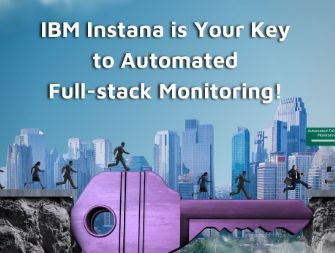August 2025 – Montreal, Quebec, Canada
In the average enterprise, data lives in more silos than an Iowa cornfield—CRM here, ERP there, marketing automation in the cloud, HR systems on-premises. Getting them to talk to each other used to be like teaching cats to swim. Enter Integration Platform as a Service (iPaaS)—the cloud-based glue that connects all your apps, data, and workflows without months of custom coding.
Why iPaaS Is in Demand
Businesses now operate in hybrid and multi-cloud environments, using dozens—sometimes hundreds—of applications. According to Gartner, over 75% of large enterprises will use at least one iPaaS solution by 2027 to streamline connectivity (Gartner, 2025).
The drivers are clear:
-
Faster time-to-market for new digital initiatives.
-
Lower integration costs compared to point-to-point connections.
-
Greater agility in adapting to mergers, acquisitions, and system changes.
Core Capabilities
-
Pre-Built Connectors: Out-of-the-box integrations for popular SaaS and on-premises applications.
-
Data Transformation: Automatically format and map data between systems.
-
Workflow Orchestration: Design and automate multi-step business processes.
-
API Management: Publish, secure, and monitor APIs as part of integration flows.
-
Scalability: Handle increasing data volumes without re-architecting.
Business Impact
-
Retail: Syncs e-commerce orders with ERP inventory in real time to prevent overselling.
-
Financial Services: Connects KYC verification tools to core banking platforms.
-
Healthcare: Enables HIPAA-compliant data exchange between patient portals and clinical systems.
A 2025 Forrester study found that iPaaS adopters see a 35% faster integration timeline and 25% lower integration maintenance costs compared to traditional middleware (Forrester, 2025).
iPaaS vs. Traditional Integration
Traditional enterprise service buses (ESBs) were powerful but often required heavy infrastructure, specialized skills, and long implementation cycles. iPaaS shifts integration to the cloud, reducing infrastructure overhead and enabling citizen integrators—non-developers who can build workflows using drag-and-drop interfaces.
Challenges in Adoption
-
Data Governance: Without proper controls, integrations can spread bad data faster.
-
Vendor Lock-In: Some iPaaS platforms make it difficult to migrate integrations to another provider.
-
Security Concerns: Cloud-based integration requires strong encryption, authentication, and compliance features.
The Future of iPaaS
We’re heading toward event-driven, AI-assisted integration, where iPaaS platforms anticipate needed connections, recommend best-fit connectors, and automatically detect and resolve failed workflows.
Expect tighter integration with low-code/no-code platforms, making it possible for business users to build and manage integrations without IT intervention—while still maintaining governance controls.
Closing Thought
In a world where disconnected systems slow down business, iPaaS is the bridge builder. It’s not just about moving data—it’s about making sure the right data is in the right place at the right time, without the integration nightmares of the past.
References
-
Gartner. (2025). Market Guide for Integration Platform as a Service. Retrieved from https://www.gartner.com
-
Forrester. (2025). The Total Economic Impact™ of iPaaS Solutions. Retrieved from https://www.forrester.com
-
MuleSoft. (2025). What is iPaaS?. Retrieved from https://www.mulesoft.com
Jean Francois Gauthier – InfoSec News Contributor
Montreal, Quebec
Samantha Cohen – Co-Editor
Dallas, Texas
Peter Jonathan Wilcheck – Co-Editor
Miami, Florida
Post Disclaimer
The information provided in our posts or blogs are for educational and informative purposes only. We do not guarantee the accuracy, completeness or suitability of the information. We do not provide financial or investment advice. Readers should always seek professional advice before making any financial or investment decisions based on the information provided in our content. We will not be held responsible for any losses, damages or consequences that may arise from relying on the information provided in our content.



